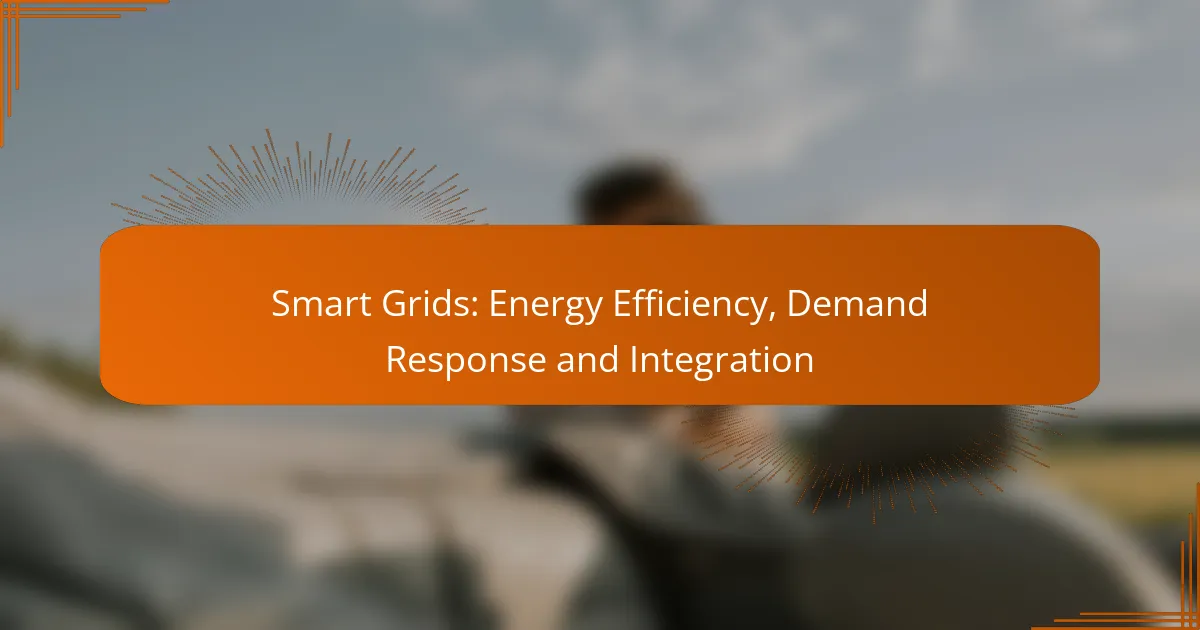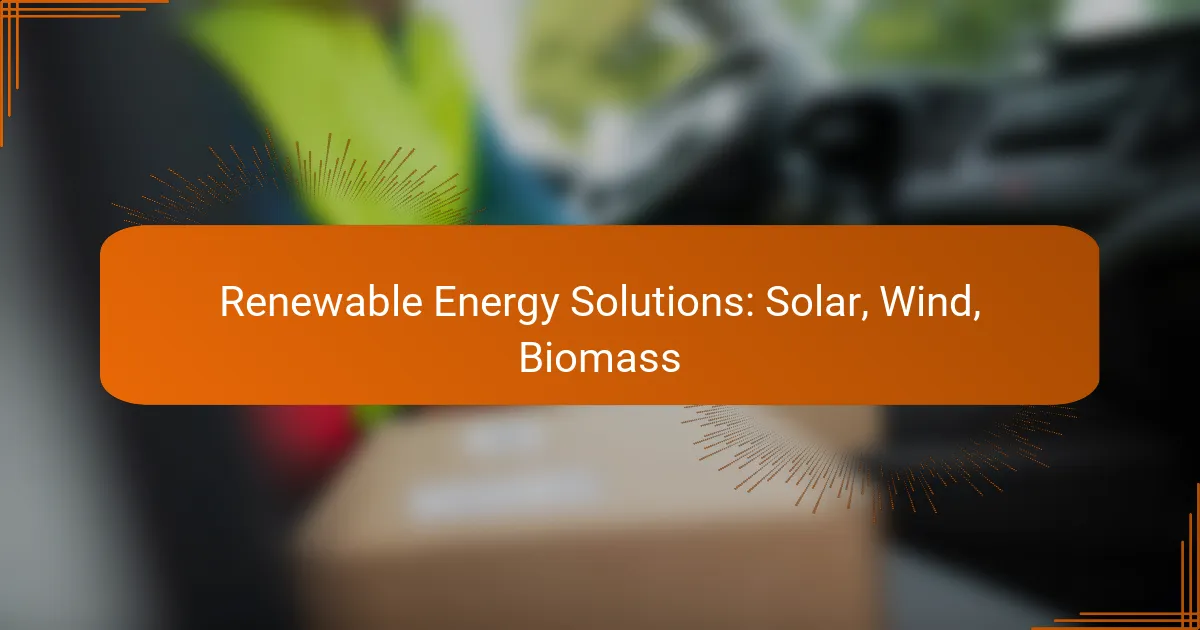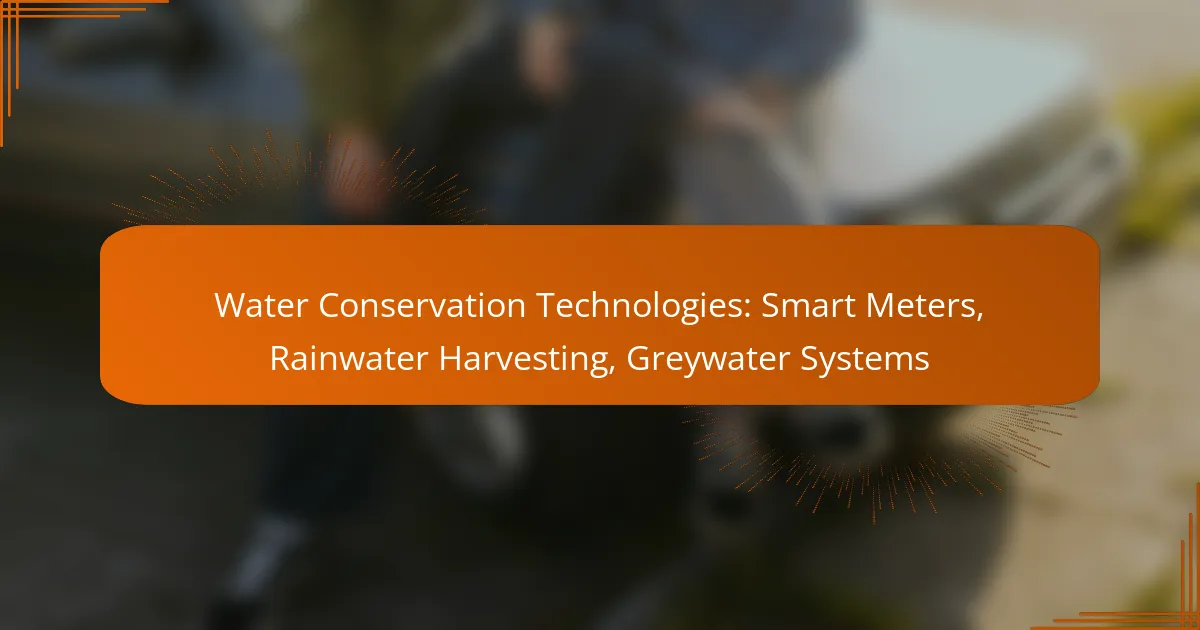Smart grids represent a transformative approach to energy management, leveraging advanced technologies to optimize electricity distribution and consumption. By facilitating real-time data analysis and implementing demand response strategies, they enhance energy efficiency and reliability, particularly during peak demand periods. Additionally, smart grids improve the integration of renewable energy sources, ensuring a more sustainable and resilient energy infrastructure.
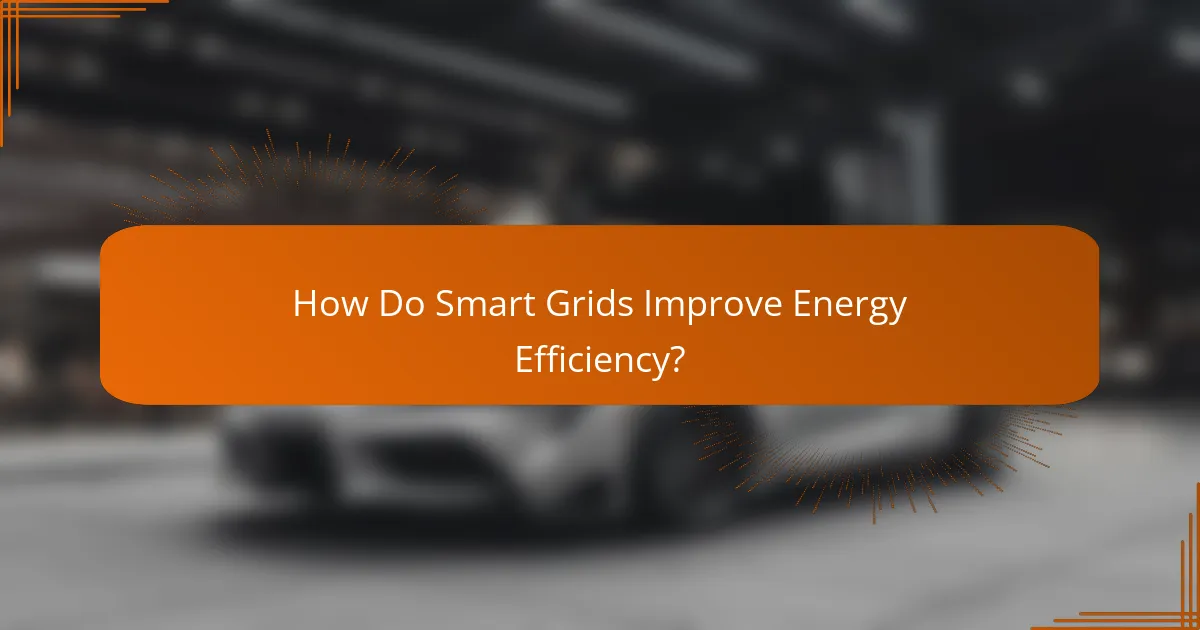
How Do Smart Grids Improve Energy Efficiency?
Smart grids enhance energy efficiency by utilizing advanced technologies to optimize electricity distribution and consumption. They facilitate real-time data analysis, enabling better management of energy resources and reducing waste.
Real-time monitoring
Real-time monitoring allows utilities to track energy usage and grid performance continuously. This capability helps identify inefficiencies and outages quickly, enabling prompt responses to issues. For example, utilities can detect abnormal consumption patterns, which may indicate equipment malfunctions or energy theft.
Consumers can also benefit from real-time monitoring through smart meters that provide instant feedback on their energy usage. This information empowers users to adjust their consumption habits, leading to reduced energy bills and lower environmental impact.
Automated demand response
Automated demand response (ADR) systems adjust energy consumption based on real-time supply conditions. When demand peaks or energy prices rise, ADR can automatically reduce or shift usage in commercial and residential settings. This not only helps stabilize the grid but also allows consumers to save on energy costs.
For instance, during high-demand periods, smart appliances can delay operation until energy prices drop, optimizing both user savings and grid efficiency. Implementing ADR can lead to significant reductions in peak demand, benefiting both utilities and consumers.
Integration of renewable energy sources
Smart grids facilitate the seamless integration of renewable energy sources, such as solar and wind, into the existing energy infrastructure. By managing the variable nature of these resources, smart grids ensure a more reliable and efficient energy supply. This integration helps reduce reliance on fossil fuels and lowers greenhouse gas emissions.
For example, during sunny days, solar panels can contribute significantly to the grid, and smart grids can adjust demand accordingly to utilize this clean energy effectively. This flexibility is crucial for achieving sustainability goals and enhancing energy security.
Enhanced grid reliability
Smart grids improve grid reliability by employing advanced technologies to predict and mitigate potential failures. With predictive analytics and automated controls, utilities can proactively address issues before they escalate into outages. This leads to a more stable energy supply and minimizes disruptions for consumers.
Moreover, smart grids can reroute power automatically in case of a fault, ensuring continuous service. This resilience is particularly important in regions prone to extreme weather events, where traditional grids may struggle to maintain reliability.
Reduced energy losses
Smart grids significantly reduce energy losses during transmission and distribution. By optimizing the flow of electricity and utilizing advanced materials, these grids minimize waste that typically occurs in conventional systems. This efficiency translates into lower operational costs and reduced environmental impact.
For instance, smart technologies can detect and address issues like voltage drops or line losses, ensuring that more of the generated energy reaches consumers. This not only enhances overall efficiency but also contributes to a more sustainable energy landscape.
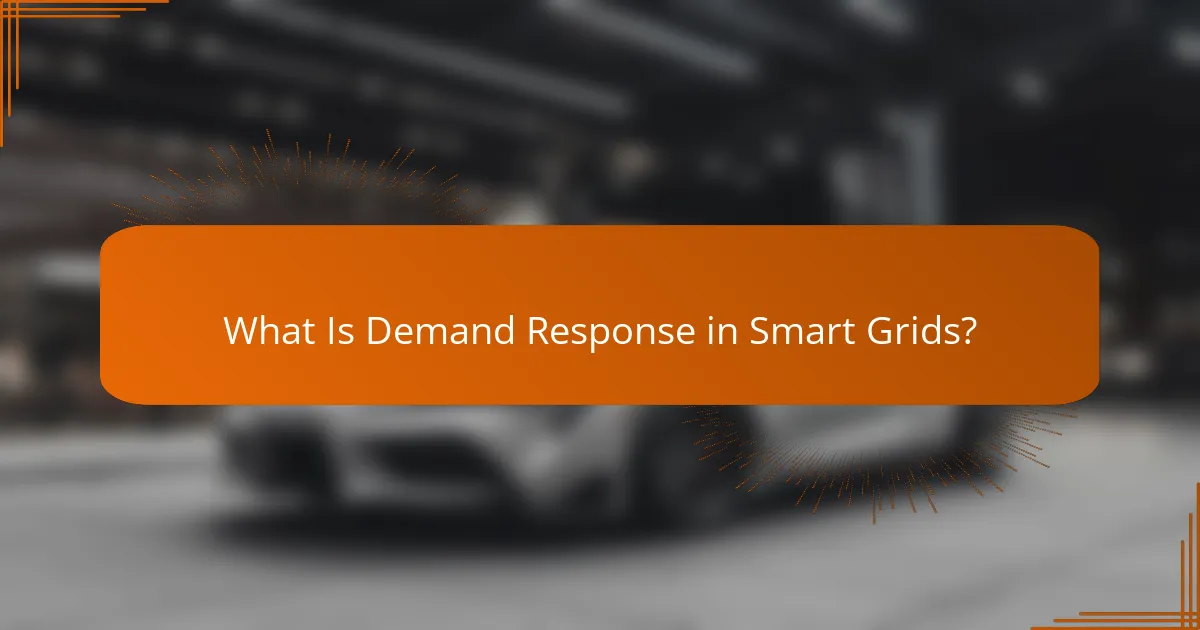
What Is Demand Response in Smart Grids?
Demand response in smart grids refers to strategies that adjust consumer energy usage based on supply conditions. This approach helps balance the grid during peak demand times, enhancing overall energy efficiency and reliability.
Definition of demand response
Demand response is a mechanism that encourages consumers to reduce or shift their electricity usage during peak periods in response to time-based rates or incentive payments. It involves real-time communication between utilities and consumers, allowing for adjustments in energy consumption based on grid needs.
This can include voluntary reductions in usage or automated responses from smart devices, ensuring that energy demand aligns with available supply. Demand response plays a crucial role in maintaining grid stability and reducing the need for additional power generation.
Benefits of demand response programs
Demand response programs offer several advantages, including cost savings for consumers and utilities. By reducing peak demand, these programs can lower energy prices and defer the need for costly infrastructure investments, such as new power plants.
Additionally, demand response enhances grid reliability and resilience, helping to prevent blackouts and reduce emissions by minimizing reliance on fossil fuel-based peaking plants. Participants may also receive financial incentives, making it a win-win for both consumers and energy providers.
Examples of demand response technologies
Several technologies facilitate demand response, including smart thermostats, energy management systems, and automated demand response platforms. Smart thermostats can adjust heating and cooling settings based on real-time energy prices, while energy management systems allow consumers to monitor and control their energy use more effectively.
Automated demand response platforms enable utilities to send signals to participating devices, automatically adjusting their operation during peak periods. These technologies not only improve energy efficiency but also empower consumers to take an active role in energy management.
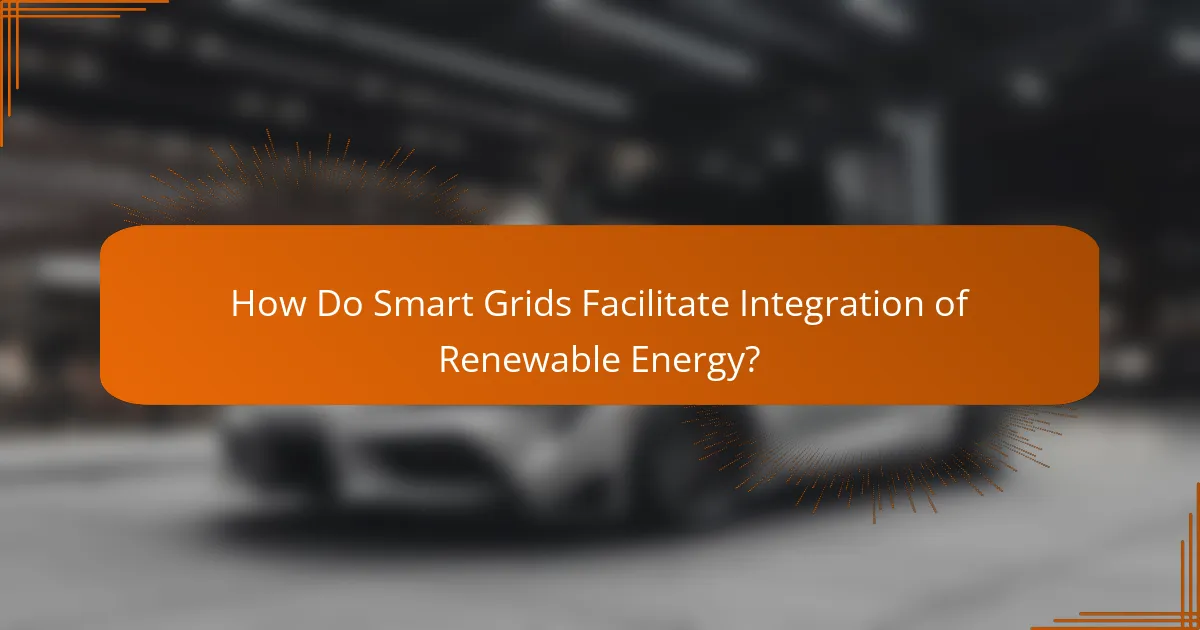
How Do Smart Grids Facilitate Integration of Renewable Energy?
Smart grids enhance the integration of renewable energy by improving the efficiency and reliability of electricity distribution. They utilize advanced technologies to manage energy flow, enabling a seamless connection between renewable sources and the grid.
Grid flexibility
Grid flexibility refers to the ability of the electricity grid to adapt to changes in energy supply and demand. Smart grids achieve this by employing real-time data analytics and automated control systems, allowing for quick adjustments to fluctuations in renewable energy generation. This flexibility is crucial for accommodating variable sources like solar and wind power.
Utilities can implement demand response programs that incentivize consumers to reduce or shift their energy usage during peak times. This not only stabilizes the grid but also maximizes the use of renewable energy when it is most abundant.
Energy storage solutions
Energy storage solutions are vital for balancing supply and demand in smart grids. Technologies such as batteries and pumped hydro storage can store excess energy generated during peak production periods and release it when demand rises. This capability helps to mitigate the intermittent nature of renewable energy sources.
For instance, lithium-ion batteries are commonly used for short-term storage, while larger systems like pumped hydro can provide longer-term solutions. The choice of storage technology often depends on factors like cost, capacity, and the specific energy needs of the region.
Distributed energy resources
Distributed energy resources (DERs) include small-scale energy generation and storage systems located close to the point of use. Examples include rooftop solar panels, small wind turbines, and local battery systems. Smart grids facilitate the integration of these resources by allowing them to communicate with the central grid and each other.
By leveraging DERs, communities can enhance their energy resilience and reduce reliance on centralized power plants. This decentralized approach not only supports renewable energy adoption but also empowers consumers to participate actively in energy management, often leading to cost savings and increased sustainability.
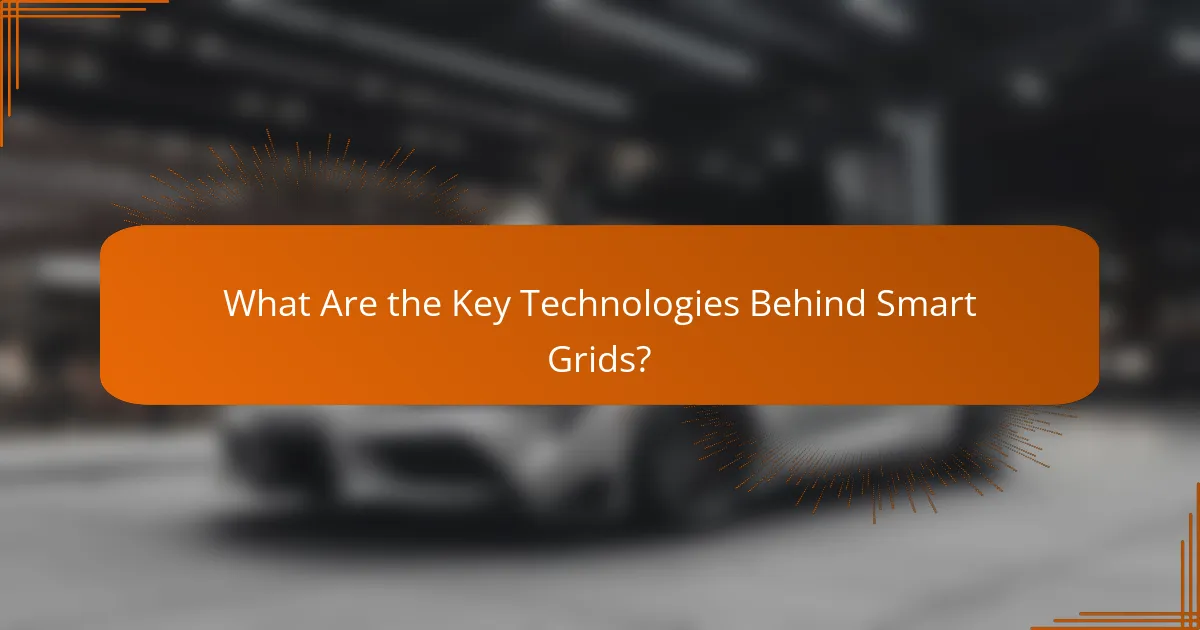
What Are the Key Technologies Behind Smart Grids?
The key technologies behind smart grids include smart meters, advanced metering infrastructure, and communication networks. These components work together to enhance energy efficiency, enable demand response, and facilitate the integration of renewable energy sources.
Smart meters
Smart meters are advanced devices that record energy consumption in real-time, allowing for more accurate billing and better energy management. They provide consumers with detailed usage data, which can help identify peak consumption times and encourage energy-saving behaviors.
These meters typically communicate data back to the utility provider, often using wireless technology. This two-way communication enables utilities to monitor energy usage patterns and respond quickly to outages or demand spikes.
Advanced metering infrastructure
Advanced metering infrastructure (AMI) encompasses the systems and technologies that support the deployment of smart meters. This includes the software and hardware necessary for data collection, storage, and analysis, as well as the communication networks that connect all components.
AMI facilitates automated meter reading, which reduces operational costs and improves accuracy. It also enables utilities to implement dynamic pricing models, allowing customers to adjust their energy use based on real-time pricing signals.
Communication networks
Communication networks are vital for the operation of smart grids, as they enable the flow of information between smart meters, utility companies, and consumers. These networks can use various technologies, including fiber optics, wireless, and power line communication.
Reliable communication networks ensure that data is transmitted quickly and securely, which is essential for effective demand response and grid management. Utilities must consider factors such as latency and bandwidth when selecting the appropriate communication technology for their smart grid infrastructure.
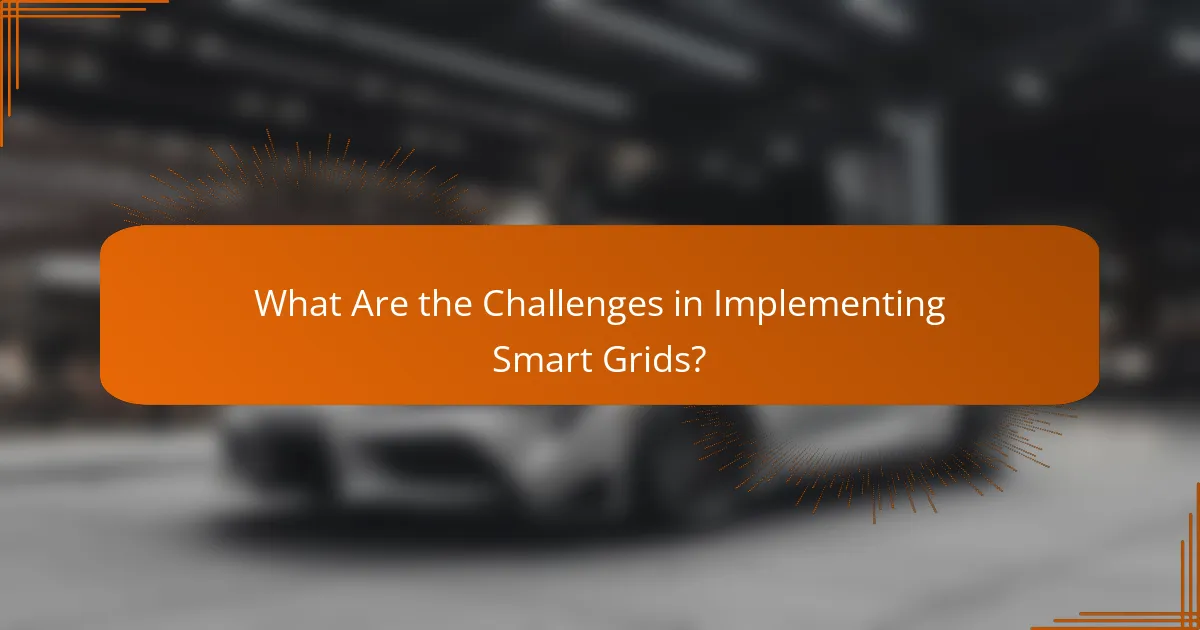
What Are the Challenges in Implementing Smart Grids?
Implementing smart grids involves several significant challenges that can hinder their development and deployment. Key issues include high initial costs, cybersecurity risks, and regulatory hurdles that must be navigated to achieve efficient energy management.
High initial costs
The transition to smart grids requires substantial upfront investment in advanced technologies and infrastructure. Costs can range from millions to billions of dollars, depending on the scale of the project and existing infrastructure conditions.
Utilities and governments often face budget constraints, making it essential to evaluate financing options and potential return on investment. Public-private partnerships and federal grants can help alleviate some financial burdens.
Cybersecurity risks
Smart grids are vulnerable to cyberattacks due to their reliance on digital communication and data exchange. Threats can include unauthorized access to sensitive information and disruptions to energy supply.
To mitigate these risks, utilities must implement robust cybersecurity measures, including regular software updates, intrusion detection systems, and employee training. Adhering to established cybersecurity frameworks can enhance protection against potential threats.
Regulatory hurdles
Regulatory frameworks for smart grids can vary significantly by region, often creating complexities for implementation. Utilities must navigate local, state, and federal regulations that may not be fully aligned with smart grid technologies.
Engaging with regulators early in the planning process can help identify potential obstacles and streamline compliance. Staying informed about evolving regulations and participating in industry advocacy can also facilitate smoother implementation.
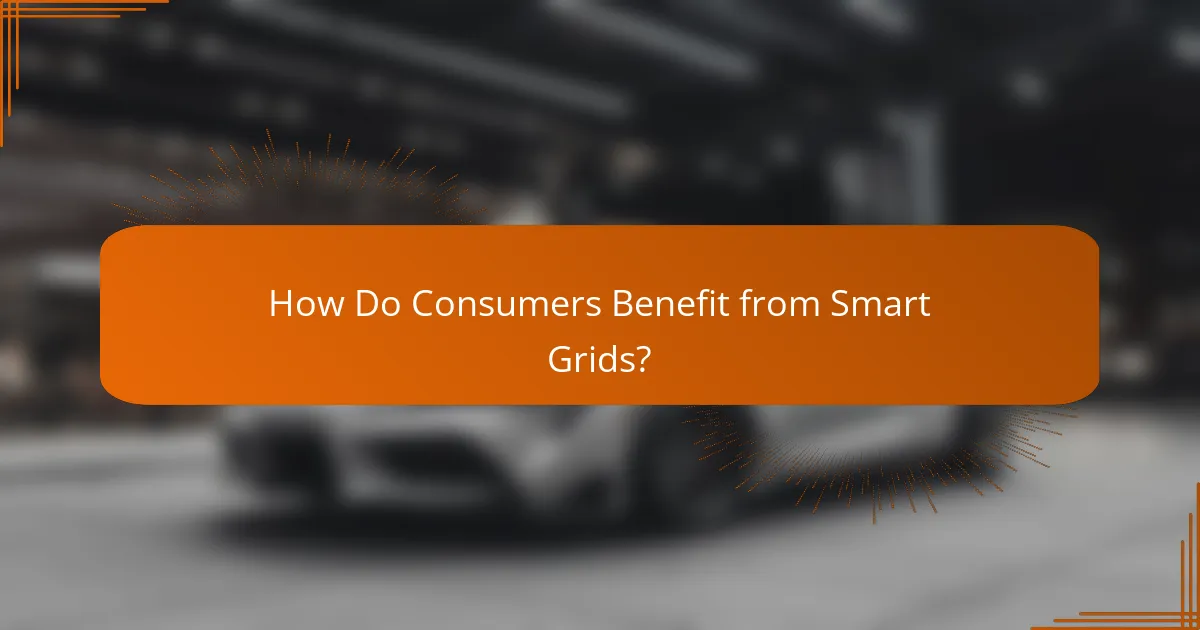
How Do Consumers Benefit from Smart Grids?
Consumers benefit from smart grids through enhanced energy efficiency, cost savings, and improved reliability of electricity supply. These advanced systems enable better management of energy resources and facilitate demand response programs that can lead to lower utility bills.
Energy Efficiency Improvements
Smart grids optimize energy use by integrating advanced technologies that monitor and manage consumption in real-time. This allows consumers to adjust their usage based on peak and off-peak pricing, leading to significant savings on electricity bills.
For instance, smart meters provide detailed insights into energy consumption patterns, helping households identify high-usage appliances. By shifting usage to off-peak times, consumers can take advantage of lower rates, often resulting in savings of 10-30% on monthly bills.
Demand Response Programs
Demand response programs incentivize consumers to reduce or shift their electricity usage during peak demand periods. Participants can receive financial rewards or bill credits for lowering their consumption when the grid is under stress.
In many regions, utilities offer programs that notify consumers via mobile apps or text messages when to reduce usage. This not only helps stabilize the grid but can also lead to savings of up to 50% during peak times for proactive participants.
Integration of Renewable Energy Sources
Smart grids facilitate the integration of renewable energy sources, such as solar and wind, into the electricity supply. This allows consumers to utilize cleaner energy options and potentially lower their carbon footprint.
For example, households with solar panels can feed excess energy back into the grid, earning credits or payments from their utility. This integration not only supports sustainability but can also lead to reduced energy costs, especially in areas with favorable net metering policies.
